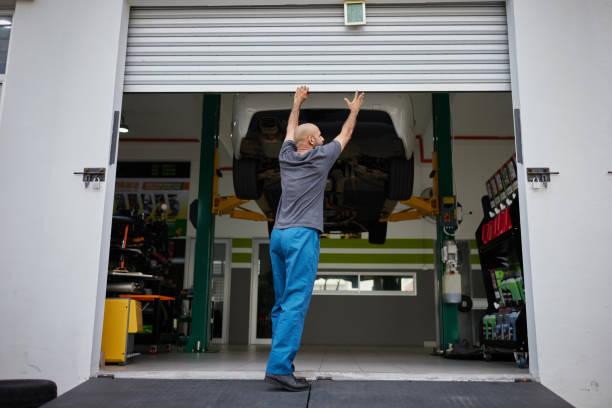Don’t overlook the warning signs! Learn how to spot when you need garage spring replacement for optimal safety.
Your garage is essential to your home, serving as storage, a workshop, or even a place to park your car. But like any other part of your house, it requires regular maintenance to ensure safety and functionality.
One crucial component of your garage system is the springs. Garage door springs play a vital role in balancing the door’s weight, making it easier to open and close.
However, these springs can wear out or break over time, posing a significant safety hazard. In this article, we’ll discuss signs indicating the need for Garage door spring replacement to help you keep your garage safe for you and your family.
1: Visual Inspection
A visual inspection is one of the simplest ways to detect spring issues. Look for signs of wear or damage, such as rust, cracks, or gaps in the springs. If you notice any of these signs, it clearly indicates that the springs need attention.
Additionally, check for any imbalance in the door’s movement or if it’s making unusual sounds while operating. These visual cues can help you identify potential spring problems early on.
2: Difficulty Opening Or Closing
Garage doors should open and close smoothly without much effort. If you find that your garage door is suddenly becoming challenging to open or close, it could be a sign of spring failure. As springs lose their tension or break altogether, they become less effective at supporting the door’s weight.
This can increase resistance when operating the door manually or with a garage door opener. Ignoring this issue can further damage the door or opener mechanism.
3: Door Doesn’t Stay Open Or Closed
Another indication of spring failure is when the garage door doesn’t open or close properly. If you notice that the door is only partially opening or closing before reversing direction, it’s likely due to spring issues.
Torsion springs, in particular, are responsible for holding the door in place when open or closed. When these springs malfunction, the door may struggle to remain in the desired position, posing a safety risk.
4: Visible Gaps In Springs
Examine the springs closely for any visible gaps or spaces between the coils. Over time, garage door springs can stretch out or become loose, resulting in gaps between the coils. This stretching weakens the spring’s ability to support the door’s weight, making it susceptible to failure.
If you notice significant spring gaps, it’s best to have them replaced promptly to prevent any accidents or damage to your garage door system.
5: Sudden Snap Or Bang
One of the most obvious signs of garage spring failure is the sound of a sudden snap or bang. This noise typically occurs when a spring breaks under tension, releasing significant energy.
If you hear this sound while operating your garage door, it’s crucial to stop using it immediately and inspect the springs for damage. Continuing to use a garage door with a broken spring can be extremely dangerous and may result in injury or property damage.
6: Uneven Movement Of The Garage Door
Another sign that your garage door springs may need replacement is if the door exhibits uneven movement while opening or closing. If one side of the door moves faster or slower than the other, it could indicate that one of the springs is damaged or worn out.
This imbalance puts strain on the springs and other components of the garage door system, potentially leading to further damage if left unaddressed.
7: Visible Wear And Tear On Cables And Pulleys
While inspecting your garage door springs, don’t forget to check the cables and pulleys for signs of wear and tear. Damaged cables or pulleys can cause the door to operate inefficiently and may even contribute to spring failure.
Look for frayed cables, rusted pulleys, or any other visible damage that could affect the smooth operation of your garage door. If you notice any issues with the cables or pulleys, it’s essential to address them promptly to prevent further damage to your garage door system.
8: Slow Response Time Of Garage Door Opener
If you have an automatic garage door opener, pay attention to its response time when opening or closing the door. A significant delay in the door’s movement after pressing the opener button could indicate that the springs are struggling to provide the necessary lifting force.
This delay not only affects convenience but also puts additional strain on the opener motor and other components. If you notice a slow response time from your garage door opener, it’s advisable to have the springs inspected and replaced if necessary.
Conclusion
Your garage door springs are an essential but often overlooked component of your garage system. Regular maintenance and timely replacement of worn or damaged springs are crucial for ensuring the safety and functionality of your garage.
By watching for the above signs, you can detect spring issues early on and prevent potential accidents or damage. If you suspect any problems with your garage door springs, don’t hesitate to contact Superior Garage Doors for inspection and replacement. Keeping your garage safe starts with keeping your springs in good condition!




